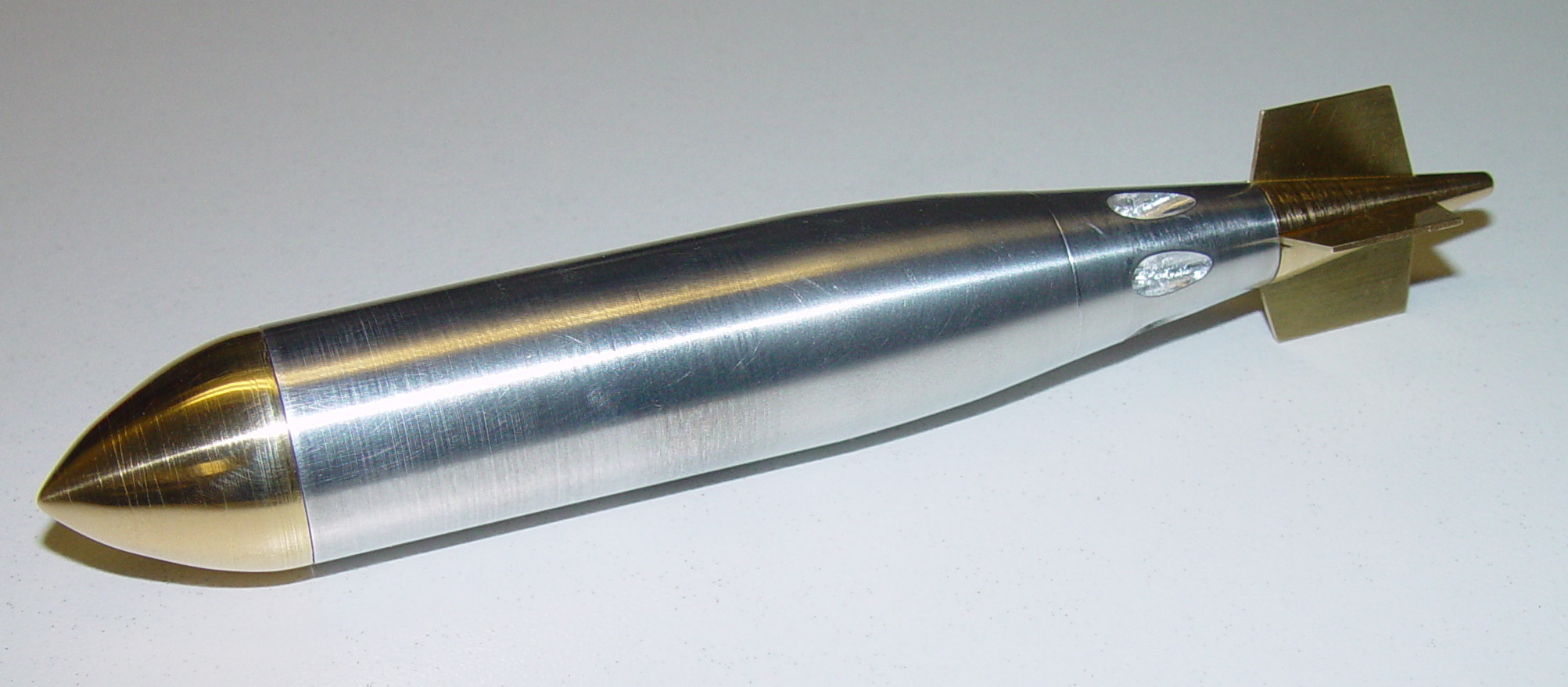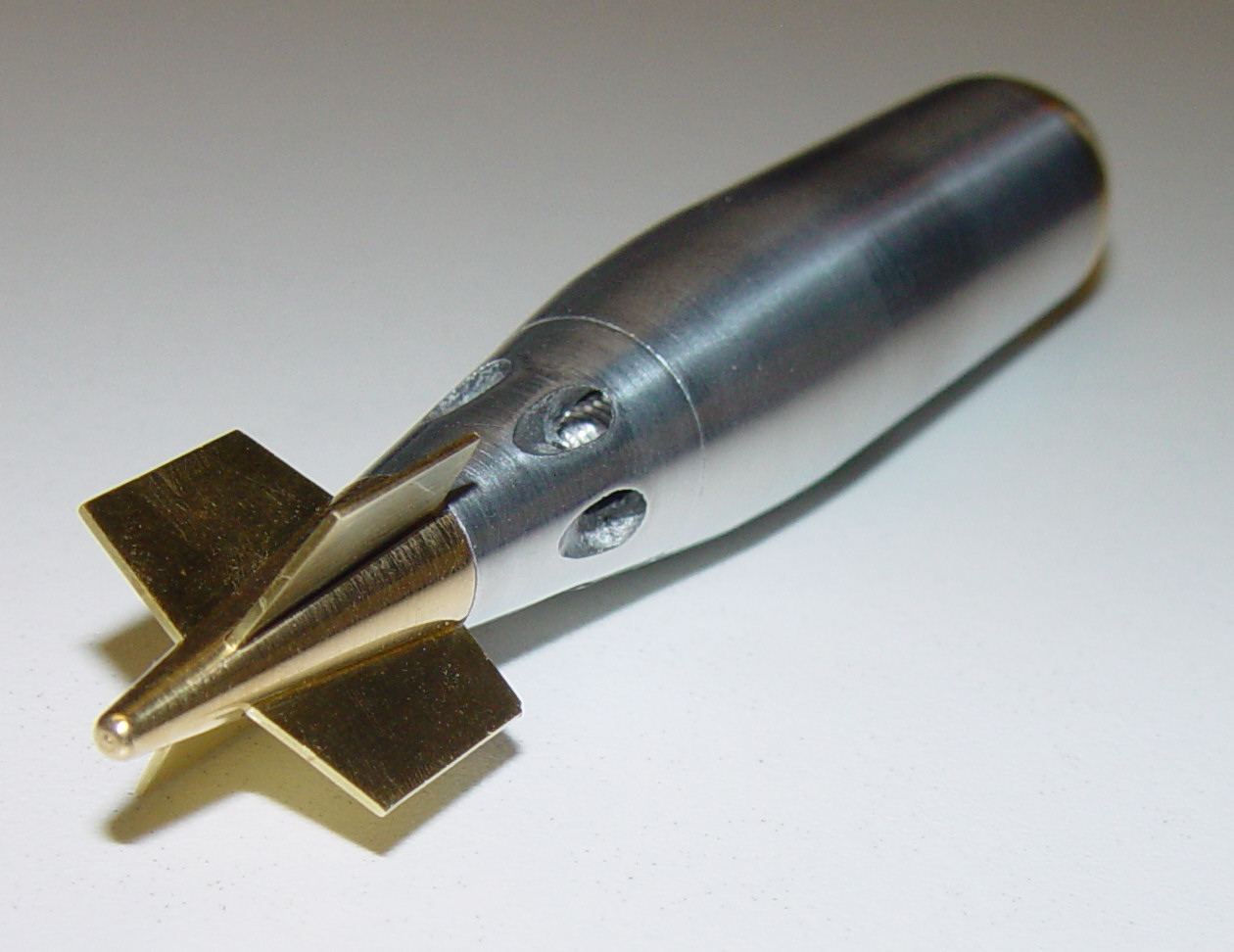Page 3 of 40
Posted: Mon Apr 11, 2011 6:30 am
by MrCrowley
Hey actually that's not a bad idea, Crna.
@jrrdw,
I would prefer six square kilometers of concrete (so the projectile can't bury itself and it'd be a flat terrain). Unfortunately, there's no where near me where I would have 6km^2 of fields to play with and if I did, it'd be too hilly. Even then, I'd never find the thing, aside from it burying itself in to the ground there'd be too much land to search.
Not sure if you've read this thread but we've been discussing ways to locate the projectile here:
http://www.spudfiles.com/forums/spudgun ... t,255.html
Posted: Mon Apr 11, 2011 7:11 am
by al-xg
Yea it will, your not trying to make it like a plane wing but more of a propeller.
Most propellers are aerofoils at an angle (just the same as an angle of attack on a plane), and work just in the same way, a flat plane will provide lift at an angle, but a specifically designed foil will be more efficient.
A bevel on oposite sides and edges just sort of simulates the angle
I wasn't serious about making actual streamlined fins to induce rotation, just based on the effects different fletchings have on arrows, even though they do help stabilise broadheads and reduce effects of wind, they slow down incredibly fast, and a generally only used for close range hunting or for aerial targets (because their range is reduced, and are therefore easier to find if target is missed, this is also why flu-flu arrows are used).
From what I understand, good fins for this application, must produce the least amount of drag while flying straight, but a high drag if the projectile moves off its axis. So symmetrical bevels on leading and trailing edge would probably be best. (sorry about the confusion

)
Posted: Mon Apr 11, 2011 7:30 am
by LeMaudit
So symmetrical bevels on leading and trailing edge would probably be best.
That was my first idea, just round a bit the edges. But I
really don't know much about aerodynamics so I'll rely on your opinions. My guts feeling was what JSR explained, I would not think rotation be a good thing. There's also the fact that it would need to be absolutely perfect, or the rotation would be asymmetrical somehow.
And, the fins are
only 0.025" thick (0.63mm). Not that much!

Does it really matter at this scale?
Posted: Mon Apr 11, 2011 8:06 am
by jackssmirkingrevenge
Crna Legija wrote:you should put your name and numbers and a message on it thats like, if you find it please return to blah blah blah. just incase you don't find it and someone els does. Maybe put something like its a science thing and please record where you found it.
... unless an unscrupulous lawyer finds it and sues you because there was the off-chance it might have hit him. I'm not sure if its a good idea especially in places where spudguns are of questionable legal status.
In terms of stability, rotation is generally a good thing, but we already have fins. The amount of spin such a high aspect ratio projectile would need to be stable is unrealistic, which is why elongated projectiles tend to be fin or drag stabilised. In our case, spin would be needlessly robbing projectile of forward velocity, which is what we want to achieve range.
The wiki entry on
kinetic energy penetratorshas some insight on the matter:
The logical progression was to make the shot longer and thinner to concentrate the kinetic energy in a smaller area. However a long, thin rod is aerodynamically unstable; it tends to tumble in flight and is less accurate. Traditionally, shells were given stability in flight from the rifling of the gun barrel, which imparts a spin to the round. Up to a certain limit this is effective, but once the projectile's length is more than six or seven times its diameter, rifling becomes less effective. Adding fins like the fletching of an arrow to the base gives the round stability, hence Armour-Piercing Fin-Stabilized Discarding Sabot (APFSDS). The spin from rifling decreases the effective penetration of these rounds (rifling diverts some of the linear kinetic energy to rotational kinetic energy, thus decreasing the round's velocity and impact energy) and so they are generally fired from smoothbore guns
LeMaudit wrote:And, the fins are only 0.025" thick (0.63mm). Not that much!
Does it really matter at this scale?
You will be surprised at the difference it makes. As an adolescent I made quite a number of balsa wood aircraft, even with 0.75mm thick flying surfaces the difference rounding off the edges makes in terms of performance is something palpable even without instruments.
Posted: Mon Apr 11, 2011 7:52 pm
by LeMaudit
I'm adding about 12mm to the length of the central body part (that make a +10%). Just to maximize a bit the possible usage of the internal chamber. I don't think this should be a problem, but if you think so just tell me.
Posted: Mon Apr 11, 2011 8:29 pm
by ramses
The extra 12mm sounds good.
Ragnarok reports
some successwith filed fins inducing spin on crossbow bolts. It took a few pages for people to understand that it didn't increase drag and would help accuracy without gyroscopic stabilization.
Posted: Mon Apr 11, 2011 10:25 pm
by LeMaudit
Ragnarok reports

okay, too late for me, brain is already shut down... I save that reading for tomorrow morning

Posted: Mon Apr 11, 2011 11:42 pm
by jackssmirkingrevenge
ramses wrote: Ragnarok reports
some successwith filed fins inducing spin on crossbow bolts. It took a few pages for people to understand that it didn't increase drag and would help accuracy without gyroscopic stabilization.
Inducing spin is gyroscopic stabilisation

If I understood correctly, the idea is to induce spin via an airfoil section as opposed to having an angle of attack on the fins. As long as you're not increasing cross sectional area it should work.
Posted: Tue Apr 12, 2011 3:46 am
by al-xg
It does not increase the drag compared to having straight edges.
But having symmetricaly streamlined edges would probably cause even less drag.
Although over the whole flight it could be better to use a small amount of energy to keep the projectile stable vs saving that energy and then having more drag when it starts to go off axis.
So yeah as he said no free energy here, limited drag, then maybe less drag in the long run.
But any modifications like this should really be tested before hand, with maybe shorter range shots to see how the projectile reacts. You don't want to have too may unknowns if you're going for a one off crazy long range shot.
Posted: Tue Apr 12, 2011 5:15 am
by jackssmirkingrevenge
al-xg wrote:You don't want to have too may unknowns if you're going for a one off crazy long range shot.
I agree that some low pressure shots are in order - keeping variables such as launch pressure/angle strictly fixed and as much as possible in the same atmospheric conditions - before going for distance.
Maybe LeMaudit could supply different sets of fins with symmetrial and lifting sections?
Posted: Tue Apr 12, 2011 11:13 am
by LeMaudit
the body is completed. Now I only need a long threaded rod


Maybe LeMaudit could supply different sets of fins with symmetrial and lifting sections?
well.. I could... but do you think it worth the risk to destroy/lost it during shooting tests

I'm not even sure how we could really see any difference without shooting it for real.
Besides... is it possible with an hybrid to vary the power as easily as for a pneumatic?
Posted: Tue Apr 12, 2011 11:28 am
by Crna Legija
He could put the same size barrel on his val cannon or just fire a 1 or 2 x mix
Posted: Tue Apr 12, 2011 4:44 pm
by LeMaudit
A stainless threaded rod and some fancy nuts...

Posted: Tue Apr 12, 2011 4:50 pm
by LeMaudit
... and the shell completed.



well,, completed except for the fins that I didn't shape aerodynamically yet, and of course.. now I'll work on the sabot!
Posted: Tue Apr 12, 2011 5:04 pm
by POLAND_SPUD
damn that looks too good
I still think that he should use the simplest and cheapest round... but hey that's just me, I like practical solutions




